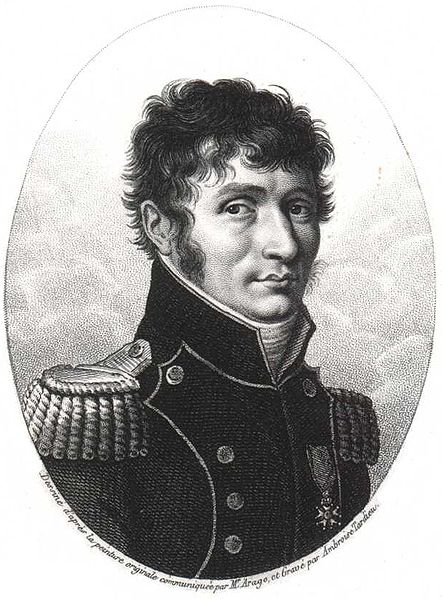<Back to Index>
- Physicist Étienne Louis Malus, 1775
- Painter Yury Pavlovich Annenkov (Georges Annenkov), 1889
- Indian Independence Fighter Bal Gangadhar Tilak, 1856
PAGE SPONSOR

Etienne-Louis Malus (23 July 1775 – 24 February 1812) was a French officer, engineer, physicist, and mathematician.
Malus was born in Paris, France. He participated in Napoleon's expedition into Egypt (1798 to 1801) and was a member of the mathematics section of the Institut d'Égypte. Malus became a member of the Académie des Sciences in 1810. In 1810 the Royal Society of London awarded him the Rumford Medal.
His mathematical work was almost entirely concerned with the study of light. He studied geometric systems called ray systems, closely connected to Julius Plücker's line geometry. He conducted experiments to verify Christiaan Huygens' theories of light and rewrote the theory in analytical form. His discovery of the polarization of light by reflection was published in 1809 and his theory of double refraction of light in crystals, in 1810.
Malus attempted to identify the relationship between the polarising angle of reflection that he had discovered, and the refractive index of the reflecting material. While he deduced the correct relation for water, he was unable to do so for glasses due to the low quality of materials available to him (most glasses at that time showing a variation in refractive index between the surface and the interior of the glass). It was not until 1815 that Sir David Brewster was able to experiment with higher quality glasses and correctly formulate what is known as Brewster's law.
Malus is probably best remembered for Malus' law, giving the resultant intensity, when a polariser is placed in the path of an incident beam. His name is one of the 72 names inscribed on the Eiffel tower.